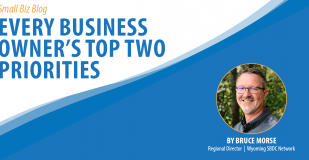Congratulations, you’ve made the decision to open a real, brick and mortar retail store! The main advantage of an independently-owned store over online shopping is the opportunity to really connect with customers and give them a chance to touch and try actual products. A crucial step in this is strategically mapping your retail space.
In Wyoming, we are seeing a resurgence of shoppers returning to the streets to seek out and explore new, innovative shops.
Start Mapping Your Retail Space
“A physical location deepens trust by its mere physical presence. Consumers associate bricks and mortar with legitimacy. They can engage their seller face to face and work out difficulties or return products that don’t meet their expectations.”
–Specialty Equipment Market Association
There are lots of decisions to make — signage, ordering inventory, setting up a point of sale system, hiring employees. The list goes on and on! Another key decision to make is how to set up your store so the flow of customer traffic generates the most sales. Did you know there is a science to creating that traffic map? Your local Wyoming SBDC Network advisor can outline the most common, effective layout and I would also challenge you to visit several franchise stores and compare the layout to the descriptions! Observing how people move through a space can literally make or break your business.
Step 1: The Landing Zone
Let’s take an imaginary walk through your store. First, enter through your front door and take a critical look at your entrance. Is it in the center of your store? Off to the right or left? The best scenario brings people in at the center or left-hand side as you enter. Offer a “landing” space to allow customers step in to get their bearings and view your store. Hint: signage that drops down from the ceiling is very effective at visually helping people quickly find what they are seeking.
Step 2: The Power Wall
After surveying your space, nearly every customer will subconsciously turn and move to the right. What do you see there at the front of your store on your right-hand side? This is your “power wall.” Ideally, the merchandise should be your top dollar, brand new merchandise that will excite people to explore further. Incidentally, 46% of all sales are made in this area!
Step 3: The Speed Bump
From the right, your customers will typically move back to center as they travel to the rear of the space. It could be termed a “speed bump” that is also a hot spot where 35% of sales are made. Think of a mall department store — the “bling” is in the front and center and down the middle aisle. That’s where the jewelry displays and perfume counters are located. It can be interactive and is a great spot to have a salesperson to chat about the products. What is your hot seller? It should be here.
Step 4: Sales and Discounts
Finally, the path moves to the left and rear of the store. Often sale and clearance items are back in this area. It is still a prime spot for sales as 15-38% of sales are made in this area.
Step 5: Final Opportunities
Two major areas are not mentioned in this journey through your store — the front left and the back right. What to do in those spots? They are great for checkout counters or sitting areas for shopping companions. From either vantage point, the entire store can be seen at once. This gives sales people an opportunity to engage face-to-face with the customer at all times and also deters theft. Sales tend to be lower, but there are opportunities for impulse purchases as they are quieter areas of the store.
Step 6: Help is Available
Try these ideas in your space. The goal is to slow down the shopper and move more merchandise! If you’d like assistance mapping your retail space, or even double-checking your set up, you can contact your local Wyoming SBDC Network advisor for no-cost assistance anytime.
About the Author: Susan helps new and existing businesses to develop strong marketing, financial and business plans. She is experienced in marketing materials, graphic design, human resources, sustainability and general business topics. Her work experience includes owning multiple businesses, including a printing company, construction business, in-home daycare, and is a founding member of a local artist coop.






